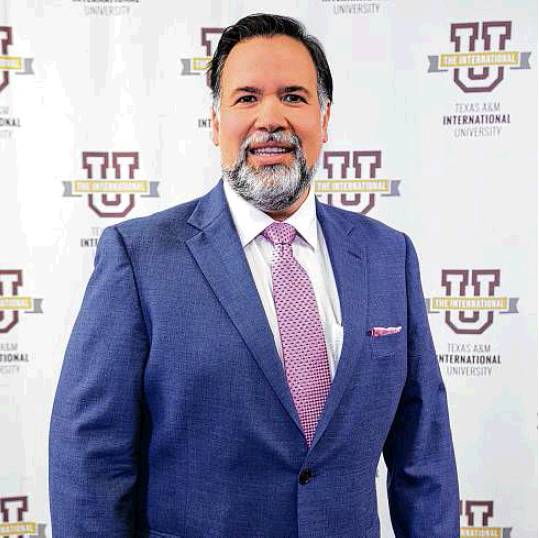OP-ED
Port Laredo:The Million-Mile Logistechs
By Daniel Covarrubias
For over half a century, Port Laredo has been recognized as the predominant inland port on the United States and Mexico border. Undoubtedly, its privileged geographic location at the center of the United States-Mexico-Canada Agreement (USMCA) corridor (connecting Mexico, the United States, and Canada) has contributed significantly to the success of this border region. Billions of trade dollars for vehicles, vehicle parts, electronics, chemicals, agribusiness, mineral fuels, and beverages, among other products, clear customs every year through Port Laredo via trucks and containers that travel millions of miles.
World-class supply chains and clusters, such as the Mexican and Michigan automotive clusters, depend on this region's infrastructure to efficiently process their auto parts and finished goods, consequently allowing these clusters to ensure that their goods and services will safely arrive at their destinations and reduce their time-to-market and costs.
While Port Laredo’s strategic location has been critical to its success, the organic logistics cluster formed in this cross-border area represents its second crucial component. This cluster includes over 500 custom broker firms, more than 500 transportation companies, and at least 300 logistics warehouses and storage facilities, which together employ more than 30,000 employees on both sides of the border. This critical mass of knowledge, experience, and human capital contributes immeasurably to the
The technology powering this Port is its third key to success. I will focus on how this technology is successfully used both by private companies and port authorities. Many firms use technology to help facilitate their day-to-day operations. Companies use warehouse and transport management systems to help with customs clearance, order processing, inventory management, and freight transportation tracking. Governmental agencies in charge of the administrative and security tasks use technology to help facilitate an efficient electronic customs clearance.
U.S. Customs and Border Protection (CBP) is currently working on the 21st Century Customs Framework Initiative and has developed the Automated Commercial Environment (ACE). Private companies use the ACE system to input information on imports and exports, and the governmental agency processes the clearance of goods and services through it. Through this IT system, CBP looks to automate all phases of cargo clearance, allowing for the digital submission of documents, facilitating and expediting trade while improving border security.
In Nuevo Laredo, Aduana México, the Mexican government port authority, recently launched an initiative called PITA (Proyecto de Integración Tecnológica Aduanera), which translates to Customs Technological Integration Project. This initiative is gradually being implemented on all US- México land ports of entry and will officially go into effect in Port Laredo January 1, 2022. This new technology will automate and streamline the clearance of goods into and from México. PITA simplifies the customs clearance process by using computer vision, data analytics, and smart sensors. On both sides of the border, these technologies used by both private enterprise and public entities allow risk analysis to be more innovative, predictive, and automated, ultimately making international trade more fluid, more agile, and more secure.
What comes next? In my opinion, Port Laredo's claim to fame will continue by developing its LOGISTECHS capabilities. What do I mean by logistechs? In my view, this term represents the impact that exponential technologies have on logistics. The McKinsey Global Institute estimates that the transportation and warehousing industry has the third-highest automation potential of any sector. Private companies and public entities within the logistics cluster will benefit from more innovative technological development. Private and public entities should actively research proven concepts, pilot programs, and industry collaboration. This research will help them identify and invest in the use of technologies, such as augmented and virtual reality, the internet of things (IoT), artificial intelligence (AI), block-chain, warehouse robots, machine learning, predictive analytics, as well as autonomous vehicles, to name a few.
Logistechs can be classified as the exponential technologies that support the transport of goods, those that improve their handling, and the technologies that expedite their customs clearance. Robots, autonomous vehicles, and the automation of paperwork verification will eliminate the simple and repetitive work scattered throughout logistics processes, leading to a higher quality of service. Big data analytics and AI will allow companies to analyze their customers' past transactions and shipments, forecast highly accurate demand and adjust their warehouse space and personnel to reduce time-to-market and costs. Cloud computing and machine learning can aid in materials classification, valuation, and tariff compliance. Blockchain has the potential to allow businesses and port authorities global shipment visibility that improves tracking and compliance in secure, real-time shared ledgers. These digital ledgers can generate total linkage between manifests and invoices, allowing for the supervision of the entire logistics process and data sharing across multiple customs organizations and users.
Technological development is transforming the supply chain from beginning to end, changing how goods are produced, shipped, and cleared. Logistics companies, customs brokers, trucking companies, and port authorities all stand to benefit greatly. I am frequently asked, "What will happen to employees displaced by automation?"
My answer always involves several components, however, my principal assertion is that the process is not rapid, and will not include sudden or unexpected changes. So, in the meantime, the region's logistics cluster partners need to continue investing in the technologies that will lay the foundation for the future: a future in which Port Laredo's strategic location will be a strength secondary only to its technological expertise, transforming this area into The Million-Mile Logistechs Hub.
